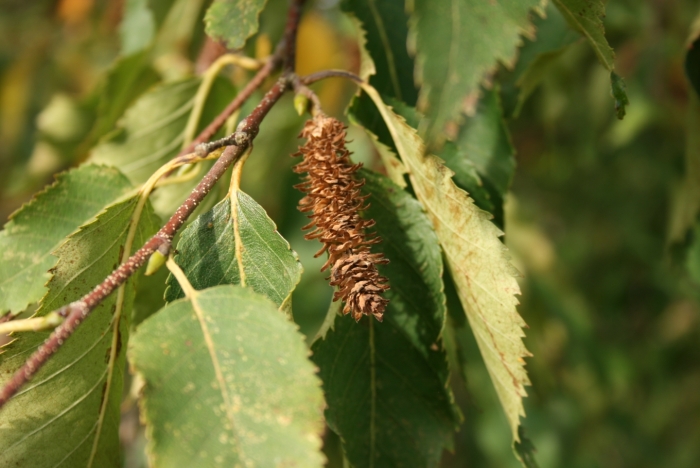Chinese Red Birch
(Betula albosinensis)
Chinese Red Birch (Betula albosinensis)
/
/

Sten Porse
CC BY-SA 3.0
Image By:
Sten Porse
Recorded By:
Copyright:
CC BY-SA 3.0
Copyright Notice:
Photo by: Sten Porse | License Type: CC BY-SA 3.0 | License URL: https://creativecommons.org/licenses/by-sa/4.0 | Uploader: Sten | Publisher: Wikimedia Commons |





























Estimated Native Range
Summary
Betula albosinensis, commonly known as Chinese Red Birch, is a deciduous tree native to the mountainous regions of western China, including Sichuan and Yunnan provinces, and extending into Inner Mongolia. It can achieve heights of 40-70 feet with a spread of 20-25 feet. The tree is noted for its striking bark, which peels in papery layers, revealing a pinkish to cream color underneath, adding year-round interest. The Chinese Red Birch produces inconspicuous brown male catkins and smaller greenish female catkins in early spring before the leaves emerge. The flowers are not particularly showy, but the tree is highly valued for its ornamental bark and elegant form.
The Chinese Red Birch is appreciated for its attractive peeling bark, which provides visual interest in all seasons, and its ability to adapt to a range of garden settings. It is often used as a specimen tree in large gardens and public parks. This species prefers a cool, moist environment and can tolerate a variety of soil conditions, though it thrives best in well-drained, slightly acidic to neutral soils. It requires full sun to part shade and should be watered regularly, especially during dry periods. While generally low-maintenance, it can be susceptible to birch borer and leaf spot diseases.CC BY-SA 4.0
The Chinese Red Birch is appreciated for its attractive peeling bark, which provides visual interest in all seasons, and its ability to adapt to a range of garden settings. It is often used as a specimen tree in large gardens and public parks. This species prefers a cool, moist environment and can tolerate a variety of soil conditions, though it thrives best in well-drained, slightly acidic to neutral soils. It requires full sun to part shade and should be watered regularly, especially during dry periods. While generally low-maintenance, it can be susceptible to birch borer and leaf spot diseases.CC BY-SA 4.0
Plant Description
- Plant Type: Tree
- Height: 40-70 feet
- Width: 20-25 feet
- Growth Rate: Moderate
- Flower Color: Brown, Yellow
- Flowering Season: Spring
- Leaf Retention: Deciduous
Growth Requirements
- Sun: Full Sun, Part Shade
- Water: Medium
- Drainage: Medium
Common Uses
Bank Stabilization, Bee Garden, Bird Garden, Butterfly Garden, Deer Resistant, Fragrant, Low Maintenance, Rabbit Resistant, Salt Tolerant
Natural Habitat
Mountainous regions of western China, including Sichuan and Yunnan provinces
Other Names
Common Names:
Scientific Names: , Betula albosinensis, Betula utilis subsp. albosinensis, Betula albosinensis var. septentrionalis, Betula bhojpattra var. sinensis, Betula utilis var. sinensis,
GBIF Accepted Name: Betula utilis subsp. albosinensis (Burkill) Ashburner & McAll.